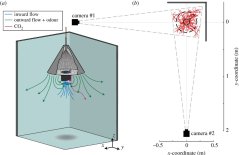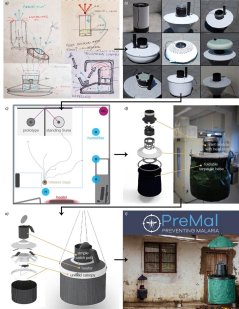
Project
How to catch a mosquito? The flight response of mosquitoes to odours and air gusts produced by odour-baited traps
We study the way mosquitoes detect and react to odours and air gusts to learn about their flight capacity and behaviours when host searching and escaping.
In the fight against malaria mosquitoes, new solutions are needed due to their increasing resistance to pesticide (WHO, 2015). One novel vector control strategy that is potentially very successful is massive mosquito trapping using odour-baited traps (Homan et al., 2016). Odour-baited traps create a circulatory airflow that dissipates attractive odours to attract mosquitoes; when approaching the trap, the mosquitoes are then sucked into the trap and killed (Figure 1).

These traps are already very good at attracting mosquitoes but their capture performances are still relatively poor. Therefore we aim at 1) better understanding how mosquitoes behave around traps and 2) how to apply this knowledge to improve traps:
For our first goal, we use a combined experimental and computational approach to study the flight dynamics and aerodynamics of mosquitoes that approach and evade odour-baited traps.
Following this, we use our new knowledge to get ideas on how to improve traps, and iteratively test the ideas by building prototypes that are compared to previously studied traps (Figure 2).
This approach already lead to the publication of two studies (Cribellier et al. 2018 and 2020) and enable us to obtain a better understanding of the mosquito’s flight capabilities and its limitations. This also made possible the development of a new mosquito trap, the M-Tego (Figure 2), which was found to capture between 2.5 and 5 times more mosquitoes than the Suna trap (Cribellier et al. 2020). Still we believe that there is still much room for improvement, and that this approach can be further used to develop novel strategies for controlling malaria mosquitoes.

Our collaborators are: Jeroen Spitzen and Sander Koenraadt (Laboratory of Entomology, Wageningen University & Research)